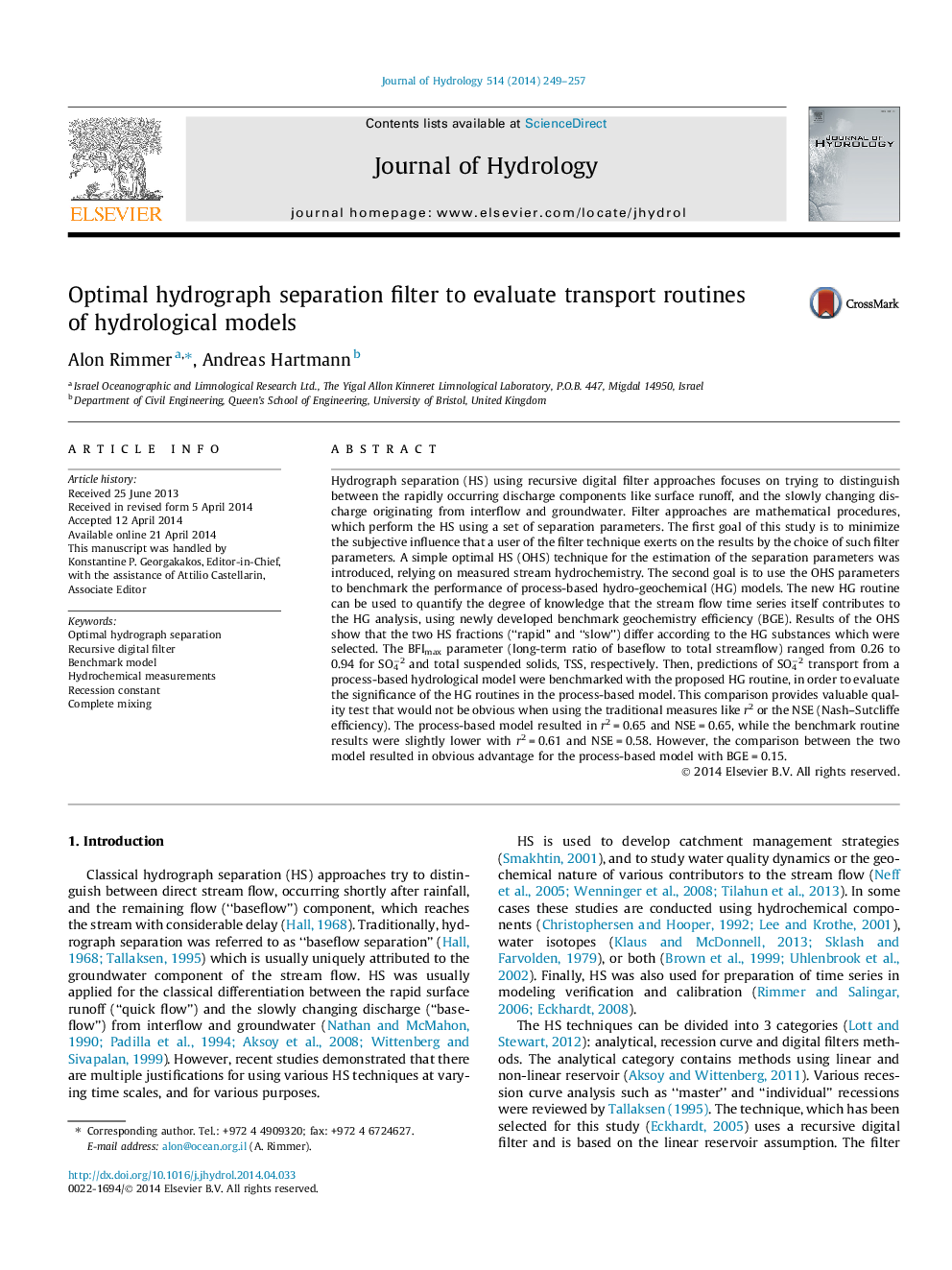| کد مقاله | کد نشریه | سال انتشار | مقاله انگلیسی | نسخه تمام متن |
|---|---|---|---|---|
| 4576019 | 1629934 | 2014 | 9 صفحه PDF | دانلود رایگان |
• New optimization technique to separate stream flow based on geochemical variables.
• Separation is physically not unique; it depends on the variable that was measured.
• New benchmark model to test the successes of hydro chemical models.
• Better evaluation of geochemical modeling procedures than using traditional measures.
Hydrograph separation (HS) using recursive digital filter approaches focuses on trying to distinguish between the rapidly occurring discharge components like surface runoff, and the slowly changing discharge originating from interflow and groundwater. Filter approaches are mathematical procedures, which perform the HS using a set of separation parameters. The first goal of this study is to minimize the subjective influence that a user of the filter technique exerts on the results by the choice of such filter parameters. A simple optimal HS (OHS) technique for the estimation of the separation parameters was introduced, relying on measured stream hydrochemistry. The second goal is to use the OHS parameters to benchmark the performance of process-based hydro-geochemical (HG) models. The new HG routine can be used to quantify the degree of knowledge that the stream flow time series itself contributes to the HG analysis, using newly developed benchmark geochemistry efficiency (BGE). Results of the OHS show that the two HS fractions (“rapid” and “slow”) differ according to the HG substances which were selected. The BFImax parameter (long-term ratio of baseflow to total streamflow) ranged from 0.26 to 0.94 for SO4−2 and total suspended solids, TSS, respectively. Then, predictions of SO4−2 transport from a process-based hydrological model were benchmarked with the proposed HG routine, in order to evaluate the significance of the HG routines in the process-based model. This comparison provides valuable quality test that would not be obvious when using the traditional measures like r2 or the NSE (Nash–Sutcliffe efficiency). The process-based model resulted in r2 = 0.65 and NSE = 0.65, while the benchmark routine results were slightly lower with r2 = 0.61 and NSE = 0.58. However, the comparison between the two model resulted in obvious advantage for the process-based model with BGE = 0.15.
Journal: Journal of Hydrology - Volume 514, 6 June 2014, Pages 249–257
